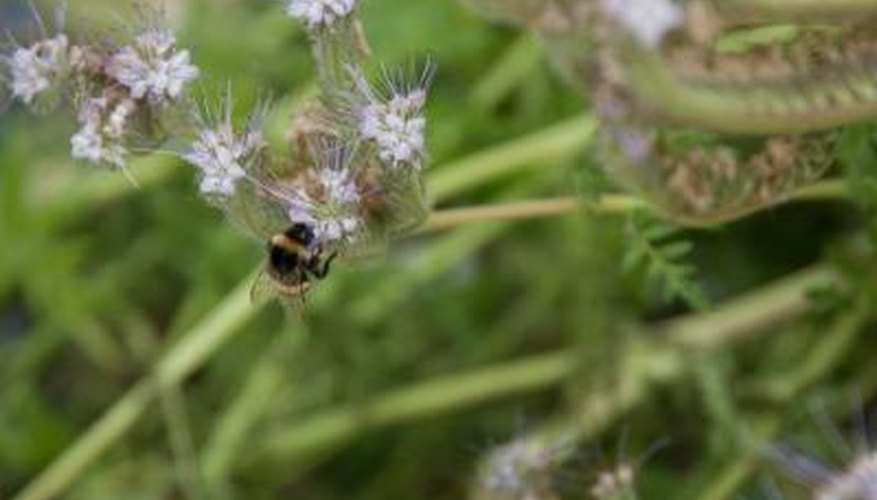Lavender -- Lavandula sp. -- is an herb desirable for its showy, attractive appearance and soothing scent. The plant, which is a member of the mint family, attracts both beneficial and harmful insects. Lavender plants thrive in sunny locations and can grow up to 3 feet tall, depending on the particular species.
Beneficial Insects
Lavender plants, with their tall, fragrant flowers, attract many beneficial, pollinating insects. In particular, they attract butterflies and honey bees, which are vital pollinators. Lavender plants also attract hoverflies, which eat damaging insect pests, such as aphids and mealybugs.
Harmful Insects
Yellowjackets, also known as wasps, and hornets are attracted to lavender. These bees can give you a painful sting, if you bother them. The rosemary beetle is also attracted to lavender and can really destroy a lavender plant if there is a heavy infestation. These shiny, purplish-green beetles are attractive in their own right, but they love to munch on the leaves and flowers of lavender plants and other aromatic herbs.
- Yellowjackets, also known as wasps, and hornets are attracted to lavender.
- The rosemary beetle is also attracted to lavender and can really destroy a lavender plant if there is a heavy infestation.
Insect Repellent
Interestingly, lavender also works to repel insects. The essential oil from this plant will repel bugs for up to 30 minutes, according to the University of Arizona Cooperative Extension. The plant also repels moths and fleas. For that reason, dried lavender is sometimes used in dog beds.
- Interestingly, lavender also works to repel insects.
- For that reason, dried lavender is sometimes used in dog beds.
